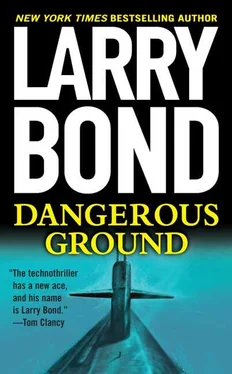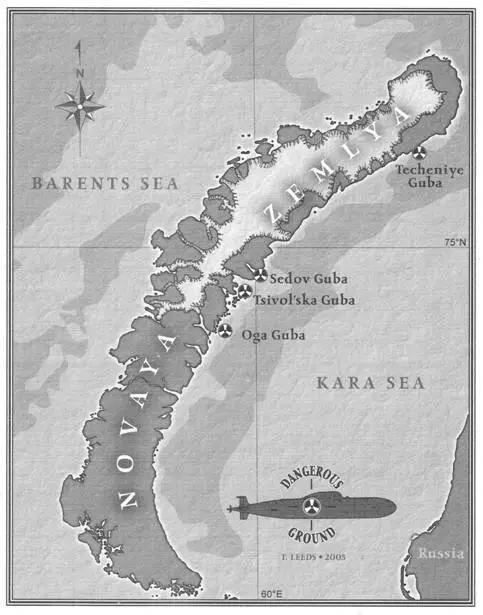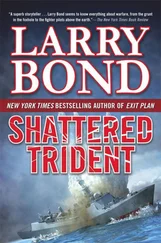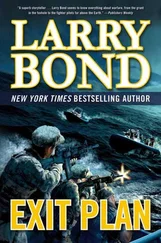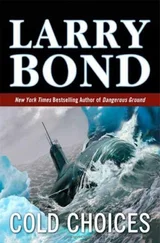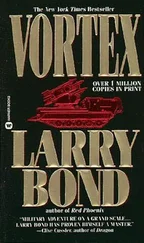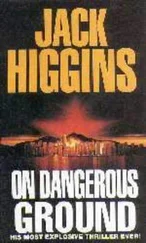Larry Bond
DANGEROUS GROUND
January 1, 2003
Naval Air Station Lemoore
Near San Francisco, California
A Navy Hornet fighter sits at the end of Runway 32R, engines spooling up, pilot making final checks before takeoff. Receiving clearance from the tower, he releases the brakes and smoothly accelerates down the concrete surface.
Pressure on the seat behind him matches the HUD’s numbers as his speed builds quickly. He approaches V 1, where he’ll bring the nose up. Takeoff will be at V 2, just a few moments away.
The right main gear tire blows with a sound like a cannon shot. He feels the jar through his seat, then a slight tilt as the right wing drops a hair and the nose pulls to starboard. Already feeling time dilation, a corner of his mind sees the airspeed change on the HUD. It’s dropping, and he realizes he’ll never get it off the ground now.
He hesitates for half a beat. Can he somehow slow the plane safely? Yanking the throttle all the way back, he stomps on the left brake and pops the airbrakes, but it’s a lost cause. The nose swings sharply to the right and with the engines off, he can now hear the screech of the right gear leg grinding against the concrete surface.
His training takes over and he slams his back hard against the seat and pulls the ejection handle. The canopy flies off and the seat follows, narrowly missed by the port wing, then the tail, as the plane cartwheels and explodes.
Crash crews reach the pilot moments after he’s landed, his chute billowing out behind him. He’s come down hard on one arm, and the sleeve of his flight suit is ripped, with white bone showing through the tear.
As they load the stretcher into the ambulance, he wakes up, calling over and over, “I’m sorry! I’m sorry!”
Navy Hospital Lemoore
Commander Albert Casey normally loved his job. He commanded squadron VFA-125, the “Roughriders,” the best Hornet squadron on the West Coast, in his not-so-humble opinion.
Right now, though, he hated it. He’d been standing in front of the door to Jerry Mitchell’s room for over five minutes, far exceeding the normal attention span of a fighter pilot. He’d come up with ten different ways to give Jerry the news, and they all sucked.
He didn’t have to knock. The door was open, and he could hear two of Jerry’s squadronmates inside visiting with him. As he turned the corner and stepped in, they saw him, and both immediately snapped to attention. They didn’t have to do that in a hospital, but reflexes are hard to fight. The two pilots, clad in khakis and leather flight jackets, saw Casey’s face and cleared out, with a few last encouragements to the patient.
Casey compared Jerry’s appearance to the way he’d looked right after the accident. They’d cleaned him up and bandaged his injuries, including a nasty abrasion on one side of his face. Somewhere in there was a young man in his mid-twenties, with buzz-cut black hair and 20/10 blue eyes.
Mitchell’s right arm was enveloped in a fat white cast, and the fingers protruding from one end were fire-engine red and swollen like sausages.
Casey wasn’t sure that Jerry didn’t try to come to attention lying in the bed, but obviously thought better of it as his body complained.
“Hello, Menace.” Casey used Jerry’s radio call sign. All pilots had them, and used them as casually as civilians used their first names. Every pilot had a different call sign, of course, picked for them or assigned when they arrived at the squadron. For a new pilot like Mitchell, the joke was whether he was more of a menace to the enemy or his own squadron, but everyone got ribbed, and he took it well.
“Good morning, sir.” Commander Casey’s call sign was “FEDEX,” but lieutenants junior grade didn’t use the CO’s call sign unless they were in the air and actually talking to him on the radio.
Casey didn’t bother asking if Jerry was in pain. “Have they still got you doped up?”
“Yes, sir,” Mitchell replied. He held up a push button on the end of a cable. “Any time I get a twinge, I push this. Problem is, I start seeing strange things, then fall asleep.”
“Sleep is what you need, kid. You’ve got some healing to do.”
“I’d heal better outside, away from this hospital.”
“You’d have to take the bed with you,” Casey joked, then continued, screwing up his courage, “I just came from the flight surgeon. You seem to have taken ones from columns A, B, C, and D. Between the back, the arm, and other miscellaneous injuries, you’re going to be here for another two weeks, at least, and then you can expect a few months of physical therapy.”
Mitchell sighed. “I’d heard as much from the doctors.”
“You’ve got to have at least one more operation on the arm, as well.”
“I hadn’t heard that,” Mitchell’s face was grim, but his tone matter-of-fact. “Whatever I have to do. So it’s going to be a few months before I’m back on flight status? How much of the training cycle will I have to repeat? I was so close to finishing.”
“The thing is, Jerry, like I said, I just talked to the flight surgeon. And the flight surgeon’s boss, and a couple of orthopedic specialists. I can’t read X-rays, but they all agreed that you can’t come back to flight status.”
“What?” Jerry’s unbelieving question mixed pain and surprise.
“The break in your arm was close to the wrist, Jerry. And it was real messy. They won’t be able to give you a full range of motion in your right wrist, and that means you won’t be able to control the throttle properly.”
“How can they tell that?” Mitchell demanded. “I haven’t been in this bed for a week and now they’re telling me I can’t fly? Let’s wait and get the cast off. Let me do some exercises.” His tone was fierce, and he half-rose out of bed, which must have been agony with a sprained back.
“They’ve seen this before, Jerry, and if there was any hope, I’d keep you on the squadron rolls until you were old and gray. But there’s no chance. None at all.”
Casey leaded forward, his voice earnest. “This is worse than a raw deal, Jerry. You are a good pilot, and you might have been a great pilot. The Navy loses you, and you lose your career. It’s taken you years of hard work to get this far, and if there was anything that could be done to keep you as a pilot, I’d be doing it right now.
“The accident board’s already writing up the report, and confirms it was a blown tire — pure bad luck. It’s definitely not your fault, and under other circumstances, I’d chew you out for trying to save the airplane, but I am convinced that hesitation did not affect your ejection. I’ve reviewed the tape, and you got out clean. Your landing and the broken arm was just more bad luck.”
Jerry’s world was turning upside down. What could he do? Pilots tend to be control freaks, depending on knowledge and skill to master any situation, but nobody could control this. And then Jerry realized that he couldn’t even think of himself as a pilot anymore.
1. MAY SHE EVER GO TO SEA
March 14,2005
SUBASE, New London
Groton, Connecticut
The Naval Submarine Base New London is located on the eastern shore of the Thames River in Groton, Connecticut. It has been there since the 1860s, although Jerry couldn’t remember the exact date. More important, it had been a sub base since World War I. Nearly two dozen nuclear subs were based there, all of them attack boats, SSNs, with the exception of the deep-diving research sub NR-1.
Читать дальше
